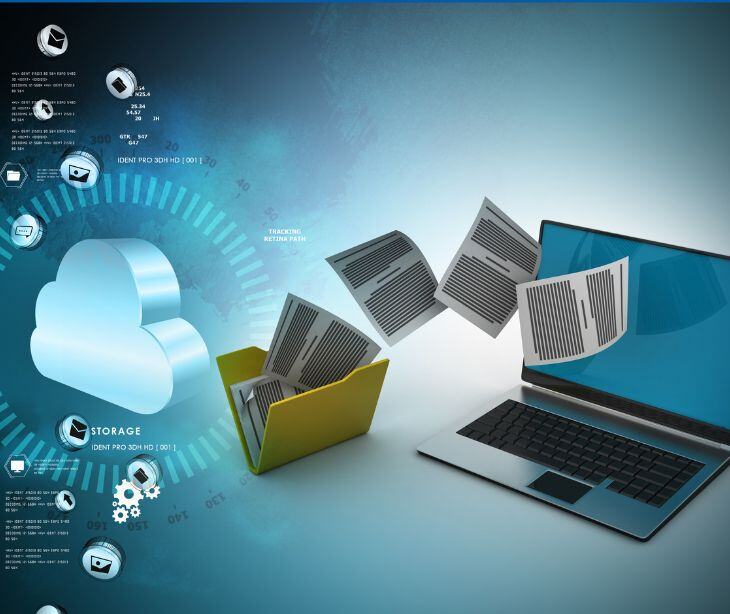
Transitioning from paper-based systems to digital records through EMR (electronic medical records) software can help therapy practices streamline scheduling, billing, documentation, and patient engagement. Additionally, EMR software often integrates with practice management tools, boosting the overall functionality and efficiency of the practice.
Understanding EMR software
EMR, short for electronic medical records, refers to digital systems that store and manage patient information, such as diagnoses, medical history, medications, and treatment plans, all in compliance with HIPAA regulations. Patients increasingly prefer online communication and email reminders for appointments, yet only 46% of physicians currently use EMR systems that meet these demands.
Read more: Understanding electronic medical records (EMR)
Features of EMR software for mental health therapists
Scheduling
EMR software allows efficient scheduling by considering insurance coverage and session types. This centralized system optimizes scheduling, reduces errors, and maximizes the number of patients you can see daily, monthly, and yearly.
Billing
EMR software simplifies billing by integrating it with documentation, allowing for efficient and accurate invoicing.
Documentation
EMR software makes it easy to document therapy sessions, track progress, and link documentation to billing codes. Access to previous notes and treatment plans enables practitioners to measure patient progress and improve plans as needed.
Patient communication
EMR software streamlines patient communication by allowing practitioners to send secure, HIPAA compliant emails and messages through a patient portal.
Learn more: HIPAA Compliant Email: The Definitive Guide
Integration with practice management software
EMR software integrates easily with practice management software, combining multiple tools. Benefits include:
- Streamlined workflow: Having patient information, scheduling, billing, and documentation in one place simplifies workflow, minimizes errors, and saves time.
- Enhanced organization: Digital records replace the need for physical storage, improving organization and operational efficiency.
- Increased revenue: Optimized workflows and reduced administrative tasks allow therapists to spend more time on patient care, ultimately increasing the number of patients seen, referrals, retention, and overall revenue.
Benefits of using EMR software for mental health therapists
According to a study by the Canadian Family Physician, new medical information and inventions require a new way of storing information. The study stated, “We need tools that improve access to information and relationships. We have had to transform how we practise, and the EMR, with its associated information technology, has facilitated that transformation.” Other benefits include:
Decreased time spent on billing
Traditional paper-based billing is error-prone and labor-intensive. EMR software reduces billing time with features like drop-down menus, autofill options, and error highlighting, increasing efficiency and reducing errors.
Improved organization and space efficiency
Storing patient records and practice information digitally frees up physical space and reduces clutter. EMR software provides organizational tools to categorize and retrieve documents.
Enhanced security of patient information
EMR software ensures patient information is securely stored and transmitted in compliance with HIPAA regulations, eliminating the risks associated with misplaced or unattended physical documents.
FAQs
What are the data security and privacy considerations when using EMR software?
- HIPAA compliance: Ensure the EMR software complies with HIPAA regulations to safeguard patient data and maintain confidentiality.
- Data backup and security protocols: Implement data backup and security measures to protect patient information from unauthorized access, loss, or breaches.
- User access control: Use EMR software with user access control options to ensure only authorized personnel can view and modify patient records.
How can EMR software help with regulatory and compliance requirements?
- Documentation compliance: EMR software assists in maintaining accurate and compliant documentation, helping practices adhere to regulatory requirements and standards.
- Billing and coding compliance: Some EMR systems support accurate coding and billing practices, reducing compliance issues related to reimbursement and claims submission.
What are the potential challenges in implementing and using EMR software?
- Transition and training: Transitioning to a new EMR system may require time and resources for training staff and adapting to new workflows.
- Integration with existing systems: Challenges may arise when integrating EMR software with existing practice management or billing systems, requiring careful planning and coordination.
What are the best practices for using EMR software?
- Staff training: Ensure all staff members are adequately trained to use the EMR software effectively to maximize its benefits.
- Customization: Use customization options in the software to tailor it to the specific needs and workflows of the practice.
- Regular updates: Stay informed about software updates and new features to maximize the EMR system's capabilities.
Subscribe to Paubox Weekly
Every Friday we'll bring you the most important news from Paubox. Our aim is to make you smarter, faster.




